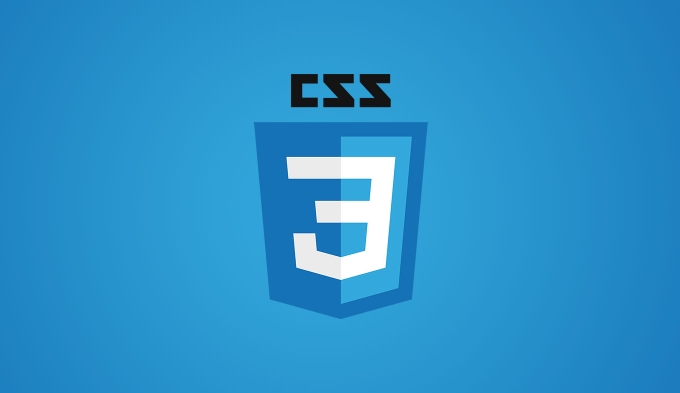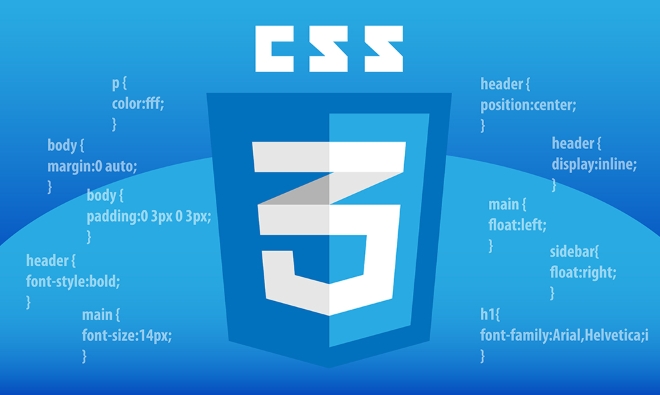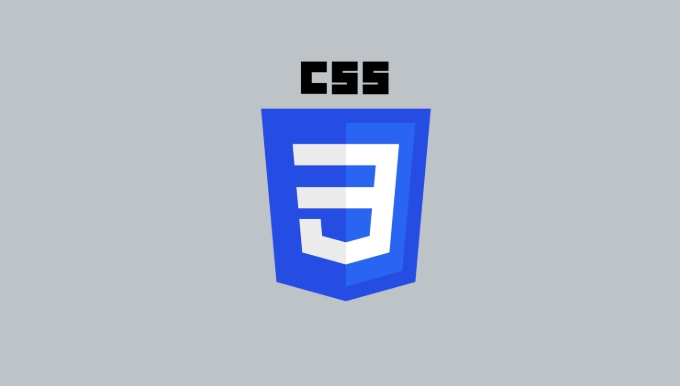CSS Grid is a powerful 2D web layout tool suitable for handling complex page structures. 1. To define the Grid container, you need to set display: grid; 2. Use grid-template-columns and grid-template-rows to set the column and row size; 3. Position sub-items through grid-column and grid-row or span keywords; 4. Use grid-template-areas to name areas to simplify complex layouts; 5. Use gap attributes to control spacing; 6. Automatically add new rows through grid-auto-rows; 7. Use media queries to achieve responsive adjustments, mastering these key points can effectively build modern web layouts.

CSS Grid is a very powerful tool in modern web layouts, which gives developers more flexibility to control two-dimensional layouts (rows and columns). If you are still using floating or flexbox to make complex page structures, it's really time to try Grid. It is not a replacement for Flexbox, but is more suitable for handling multi-dimensional layout scenarios.

Here are some questions and practical suggestions that you may be concerned about to help you get started with CSS Grid quickly.

How to define a Grid container
To use Grid, the first step is to turn an element into a "Grid container". Just add display: grid; to this element.
.container {
display: grid;
}Once set to the Grid container, all its direct child elements will automatically become Grid items, and you can start defining their location, size, etc.

A common practice is to set the size of columns and rows first, such as:
.container {
display: grid;
grid-template-columns: 200px 1fr 2fr;
grid-template-rows: auto 100px;
}The above code means: the first column has a fixed width of 200px, the second column has a proportion of 1, and the third column has a proportion of 2. There are two rows in total, the first row has a height adaptive content, and the second row has a fixed 100px.
How to locate Grid children
One of the big advantages of Grid is that it can accurately control the position of each child. You can specify which lines they span through grid-column and grid-row .
For example:
.item1 {
grid-column: 1 / 3;
grid-row: 1 / 2;
} This means that .item1 starts from the first vertical line, spans to the third line (that is, occupying two columns), and is displayed on line 1.
You can also use span abbreviation method:
.item1 {
grid-column: 1 / span 2;
} If you write this way, no matter how many columns there are at the end, .item1 will occupy two column widths.
Simplify layout with named areas
For more complex layouts, such as the header, sidebar, main content area, and bottom area, you can use grid-template-areas to name the area and then reference it in the child item.
Example:
.container {
display: grid;
grid-template-columns: 200px 1fr;
grid-template-rows: 80px 1fr 60px;
grid-template-areas:
"sidebar header"
"sidebar main"
"sidebar footer";
}
.header {
grid-area: header;
}
.sidebar {
grid-area: sidebar;
}The advantage of this method is that it is clear logic, which is especially suitable for switching layouts when doing responsive design.
FAQs and tips
How to add spacing?
You can usegapattribute to set the spacing between rows and columns, such as:.container { gap: 20px 30px; /* Row spacing 20px, column spacing 30px */ }What should I do if I add a new line automatically?
If you do not want to manually define each row, you can set the default row height withgrid-auto-rows:.container { grid-auto-rows: minmax(100px, auto); }How to adjust responsively?
The easiest way is to cooperate with media queries to change the value ofgrid-template-columnsto achieve different column counts or widths under different screen sizes.
Basically, that’s all. By mastering these key points, you can make a very complex web page layout. Grid is not difficult, but it does require understanding some new concepts and attributes. It may feel a little confused at first, but you can get started quickly with just a few trials.
The above is the detailed content of CSS Grid layout tutorial explained. For more information, please follow other related articles on the PHP Chinese website!

Hot AI Tools

Undress AI Tool
Undress images for free

Undresser.AI Undress
AI-powered app for creating realistic nude photos

AI Clothes Remover
Online AI tool for removing clothes from photos.

Clothoff.io
AI clothes remover

Video Face Swap
Swap faces in any video effortlessly with our completely free AI face swap tool!

Hot Article

Hot Tools

Notepad++7.3.1
Easy-to-use and free code editor

SublimeText3 Chinese version
Chinese version, very easy to use

Zend Studio 13.0.1
Powerful PHP integrated development environment

Dreamweaver CS6
Visual web development tools

SublimeText3 Mac version
God-level code editing software (SublimeText3)

Hot Topics
 CSS tutorial for creating loading spinners and animations
Jul 07, 2025 am 12:07 AM
CSS tutorial for creating loading spinners and animations
Jul 07, 2025 am 12:07 AM
There are three ways to create a CSS loading rotator: 1. Use the basic rotator of borders to achieve simple animation through HTML and CSS; 2. Use a custom rotator of multiple points to achieve the jump effect through different delay times; 3. Add a rotator in the button and switch classes through JavaScript to display the loading status. Each approach emphasizes the importance of design details such as color, size, accessibility and performance optimization to enhance the user experience.
 Addressing CSS Browser Compatibility issues and prefixes
Jul 07, 2025 am 01:44 AM
Addressing CSS Browser Compatibility issues and prefixes
Jul 07, 2025 am 01:44 AM
To deal with CSS browser compatibility and prefix issues, you need to understand the differences in browser support and use vendor prefixes reasonably. 1. Understand common problems such as Flexbox and Grid support, position:sticky invalid, and animation performance is different; 2. Check CanIuse confirmation feature support status; 3. Correctly use -webkit-, -moz-, -ms-, -o- and other manufacturer prefixes; 4. It is recommended to use Autoprefixer to automatically add prefixes; 5. Install PostCSS and configure browserslist to specify the target browser; 6. Automatically handle compatibility during construction; 7. Modernizr detection features can be used for old projects; 8. No need to pursue consistency of all browsers,
 Styling visited links differently with CSS
Jul 11, 2025 am 03:26 AM
Styling visited links differently with CSS
Jul 11, 2025 am 03:26 AM
Setting the style of links you have visited can improve the user experience, especially in content-intensive websites to help users navigate better. 1. Use CSS's: visited pseudo-class to define the style of the visited link, such as color changes; 2. Note that the browser only allows modification of some attributes due to privacy restrictions; 3. The color selection should be coordinated with the overall style to avoid abruptness; 4. The mobile terminal may not display this effect, and it is recommended to combine it with other visual prompts such as icon auxiliary logos.
 Creating custom shapes with css clip-path
Jul 09, 2025 am 01:29 AM
Creating custom shapes with css clip-path
Jul 09, 2025 am 01:29 AM
Use the clip-path attribute of CSS to crop elements into custom shapes, such as triangles, circular notches, polygons, etc., without relying on pictures or SVGs. Its advantages include: 1. Supports a variety of basic shapes such as circle, ellipse, polygon, etc.; 2. Responsive adjustment and adaptable to mobile terminals; 3. Easy to animation, and can be combined with hover or JavaScript to achieve dynamic effects; 4. It does not affect the layout flow, and only crops the display area. Common usages are such as circular clip-path:circle (50pxatcenter) and triangle clip-path:polygon (50%0%, 100 0%, 0 0%). Notice
 What is the difference between display: inline, display: block, and display: inline-block?
Jul 11, 2025 am 03:25 AM
What is the difference between display: inline, display: block, and display: inline-block?
Jul 11, 2025 am 03:25 AM
Themaindifferencesbetweendisplay:inline,block,andinline-blockinHTML/CSSarelayoutbehavior,spaceusage,andstylingcontrol.1.Inlineelementsflowwithtext,don’tstartonnewlines,ignorewidth/height,andonlyapplyhorizontalpadding/margins—idealforinlinetextstyling
 What is the CSS Painting API?
Jul 04, 2025 am 02:16 AM
What is the CSS Painting API?
Jul 04, 2025 am 02:16 AM
TheCSSPaintingAPIenablesdynamicimagegenerationinCSSusingJavaScript.1.DeveloperscreateaPaintWorkletclasswithapaint()method.2.TheyregisteritviaregisterPaint().3.ThecustompaintfunctionisthenusedinCSSpropertieslikebackground-image.Thisallowsfordynamicvis
 How to create responsive images using CSS?
Jul 15, 2025 am 01:10 AM
How to create responsive images using CSS?
Jul 15, 2025 am 01:10 AM
To create responsive images using CSS, it can be mainly achieved through the following methods: 1. Use max-width:100% and height:auto to allow the image to adapt to the container width while maintaining the proportion; 2. Use HTML's srcset and sizes attributes to intelligently load the image sources adapted to different screens; 3. Use object-fit and object-position to control image cropping and focus display. Together, these methods ensure that the images are presented clearly and beautifully on different devices.
 What is CSS and what does it stand for?
Jul 03, 2025 am 01:48 AM
What is CSS and what does it stand for?
Jul 03, 2025 am 01:48 AM
CSS,orCascadingStyleSheets,isthepartofwebdevelopmentthatcontrolsawebpage’svisualappearance,includingcolors,fonts,spacing,andlayout.Theterm“cascading”referstohowstylesareprioritized;forexample,inlinestylesoverrideexternalstyles,andspecificselectorslik






